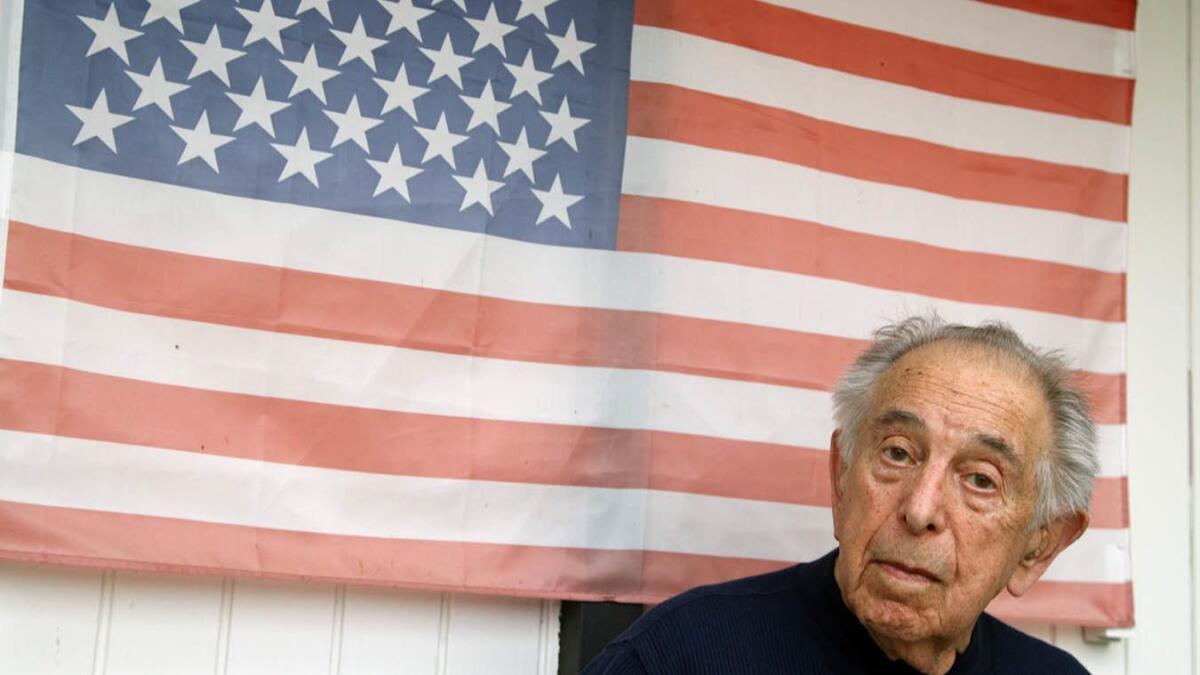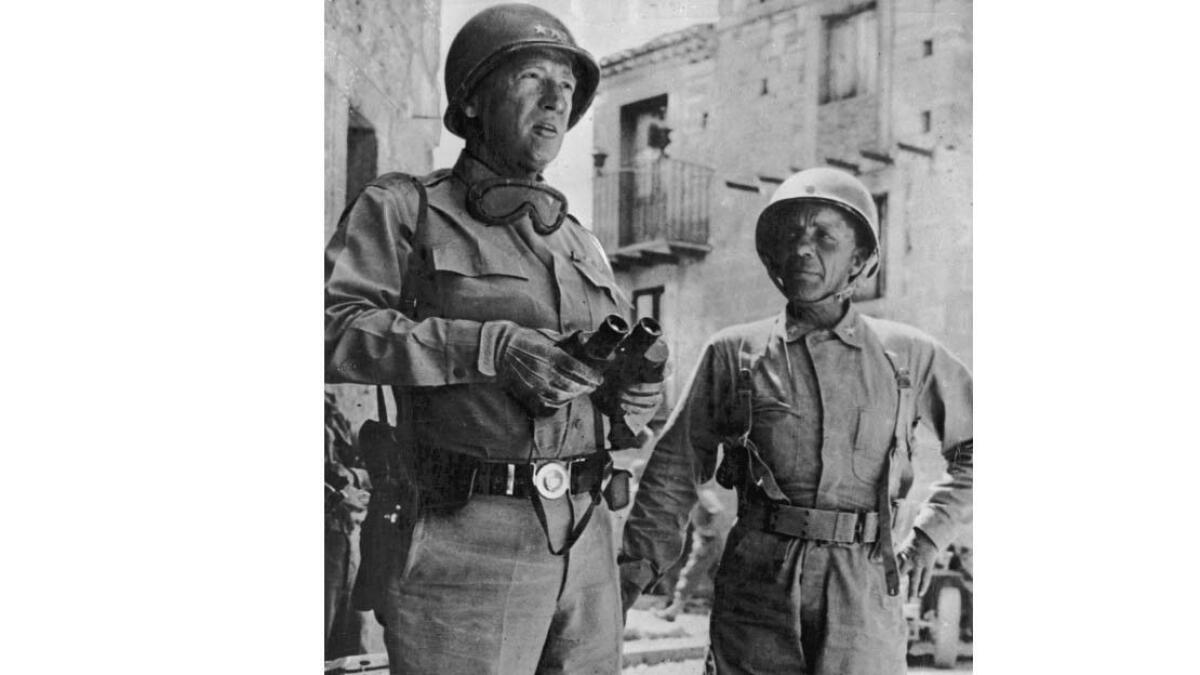How a soldier photographed a famous general’s funeral in Normandy after D-day
- Share via
In 2014, Los Angeles Times staff photographer Gary Friedman photographed World War II veteran Sidney Gutelewitz. After interviewing the former soldier and photographer, Friedman wrote this article:
By Gary Friedman
When Army Pfc. Sidney Gutelewitz returned from World War II in December 1945, he carried with him a small metal container. In it was a roll of developed 35-millimeter film.
He soon forgot about the film as he returned to civilian life. Decades would pass before he would learn the real story behind the somber images he had captured — a funeral in France that attracted 10 generals, including George Patton and Omar Bradley. Today, the 69th anniversary of V-E Day, seems a good time to share this story and its surprising connection to the nation’s 26th president.
Born in 1924 in Brooklyn, N.Y., Gutelewitz was the son of parents born in Kiev, then part of Russia. At the Metropolitan Vocational High School in Manhattan he learned the physics of photography, such as processing and developing film. Before enlisting in the Army in 1943, he photographed foreign freighters and did head shots for the U.S. Coast Guard, earning about $20 to $25 a week.
Now a spry 89, Sidney, who after the war changed his last name to Gutell, recalls that he wanted to be a paratrooper because they wore “high shiny boots and got a lot of attention and much publicity from civilians.”

However, he flunked out of paratrooper training at Fort Benning, Ga., after just one week. He moved on to antiaircraft training on Bofors 40-millimeter guns and was sent to France soon after D-day. He took his camera with him.
On July 13, 1944, Gutelewitz was with his gun crew in Normandy when he noticed a lot of activity on a nearby field known as the Jayhawk cemetery. He crossed the road and saw the generals — 10 of them in all — some with three stars.
He recognized Patton and Bradley leading the procession and began to shoot the ceremony not knowing who was being buried. But he knew that, with so many generals present, “it wasn’t a PFC.”
“It was a big funeral and something you don’t see everyday,” Gutell says.
He made 26 images on his Leica (with a collapsible 3.5 Elmar lens). He says he probably developed the film (which was cut from bulk film) in Germany or Belgium, where he found a photography studio and asked the owner if he could develop the negatives. He had no equipment to make prints so put the film in a canister. He returned to his unit and later transferred to follow and photograph Gen. Patrick Timberlake of the Army Air Forces.

The photographer soldier returned to U.S. soil after 22 months in the service, sailing out of Marseille and carrying the film canister in a duffel bag.
Once stateside, he continued his photography career with weddings and bar mitzvahs. He married and moved to California in early 1946 to start a new life.
For years the funeral shots, still rolled up in the same metal can, lay in a closet in his Woodland Hills home. Then in the 1950s he made prints — 4 x 6 — but paid no attention to them. More years passed. After Gutell retired, he showed the prints to friends at the West Valley Milken Jewish Center and somebody suggested he write to the Defense Department. He did.
An answer came in a letter in 1997 from the United States Army Center of Military History. It turned out the ceremony he had photographed that July day in 1944 was the funeral of Theodore Roosevelt Jr.
“Theodore Jr.,” as he was known, was the eldest son of President Theodore Roosevelt and Edith Roosevelt. He was a political and business leader and a veteran who had been awarded the Medal of Honor.
During World War II, Roosevelt suffered from health problems — arthritis, mostly from old World War I injures, and heart trouble. On July 12, 1944, at age 56, he died of a heart attack while on active duty near Ste-Mere-Eglise in Normandy. The funeral was held the next day. He was buried next to his brother Quentin, a World War I pilot shot down behind enemy lines in 1918.
Gutell’s photos are now part of the Center for Military History’s collection.
As for the Leica he used to take the shots — serial No. 7501 — there’s a story to that too.
While sailing home from Europe aboard the Texarkana Victory, Gutelewitz ran across another soldier, also a photographer, who had a telephoto lens Gutelewitz wanted. They made a bet — Gutelewitz’s camera against the lens. Gutelewitz lost the bet and the camera.
::
This post was originally published on May 8, 2014.
See more from the Los Angeles Times archives here


